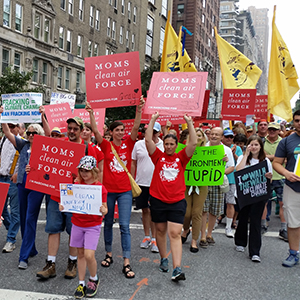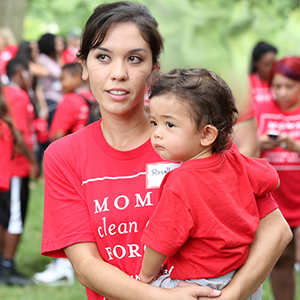By: Samantha Johnstone, Public Engagement Intern, Moms Clean Air Force
Date: July 10, 2025
About: Environmental Protection Agency Docket ID No. EPA-HQ-OAR-2018-0794-6978
To: Environmental Protection Agency
Thank you for the opportunity to testify. My name is Samantha Johnstone, and I am an intern with Moms Clean Air Force and the Environmental Defense Fund. I am from the San Francisco Bay Area, and today, I would like to tell you a bit about the place I call home and why I am asking for your help to keep it safe.
I strongly oppose EPA’s proposal to repeal recent updates to the Mercury and Air Toxics Standards because there is no safe level of mercury.
I was born and raised in the Bay Area, and one day, I hope to raise a family of my own there. Almost all of my happiest memories take place in the Bay, from kayaking with my dad to fishing with my uncle for the first time.
These fond memories aren’t just special to me. Fishing and recreation in the Bay are at the heart of most communities, cultures and dinner tables up and down the peninsula. In fact, 90% of low-income residents of color surveyed in the Sacramento-San Joaquin Delta region said they eat locally caught fish more than four days a week. The Bay and its fisheries are a crucial part of our economy and diets—which means its health is as well.
Unfortunately, there are already entire areas of the Bay where it is unsafe to consume any fish. The Lauritzen Channel, located in Contra Costa county, is so significantly polluted with mercury and PCBs that any fish caught within the 2,000-foot channel— which connects to the entire Bay—should not be eaten. Furthermore, at least three species of fish caught in any part of the SF Bay are recommended not to be eaten. Mercury pollution is a problem in my community, and it’s a problem in communities across the country.
This is because mercury is extremely harmful when ingested, as it can impair neurological and cognitive functions. The health of babies and children, like those I hope to raise in my hometown one day, are especially vulnerable to the impacts of mercury since their brains are rapidly developing. The danger of mercury grows with a higher consumption of contaminated fish, but let’s make one thing clear. The danger is present in any quantity of mercury. No amount of mercury is safe.
The mercury in Bay Area waterways comes from a number of sources, but in many other parts of the country, coal-burning power plants are the most significant source of mercury pollution. The Mercury and Air Toxics Standards protect the health of people in the U.S. at risk of exposure to mercury pollution. EPA’s proposal to repeal recent updates to MATS will unnecessarily put people at risk—particularly people who live near dirty lignite coal plants, whose outsized mercury emissions are addressed by the 2024 MATS updates. I am completely opposed to EPA’s effort to weaken these standards, as it will threaten the health of people across the country.
I would like to thank you for hearing what my home means to me, and how important it is that these standards stay in place to protect everyone’s health, including yours.




